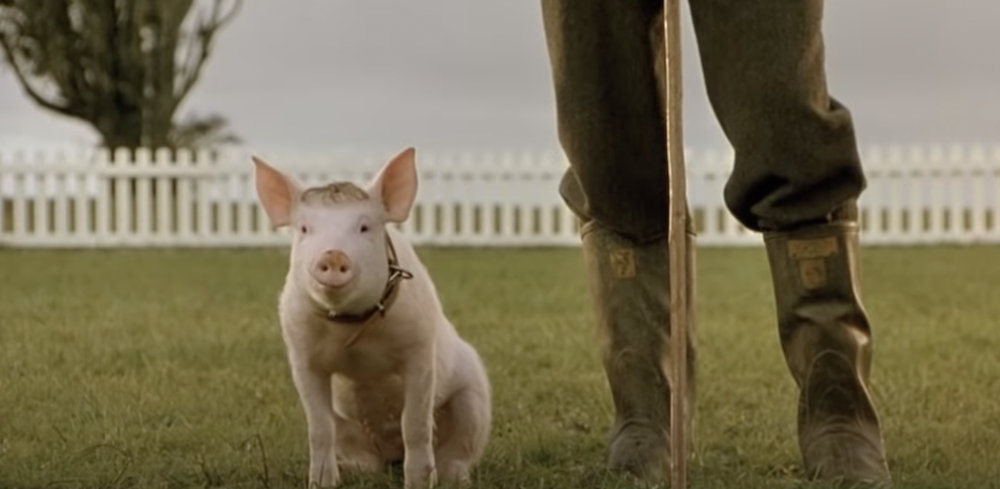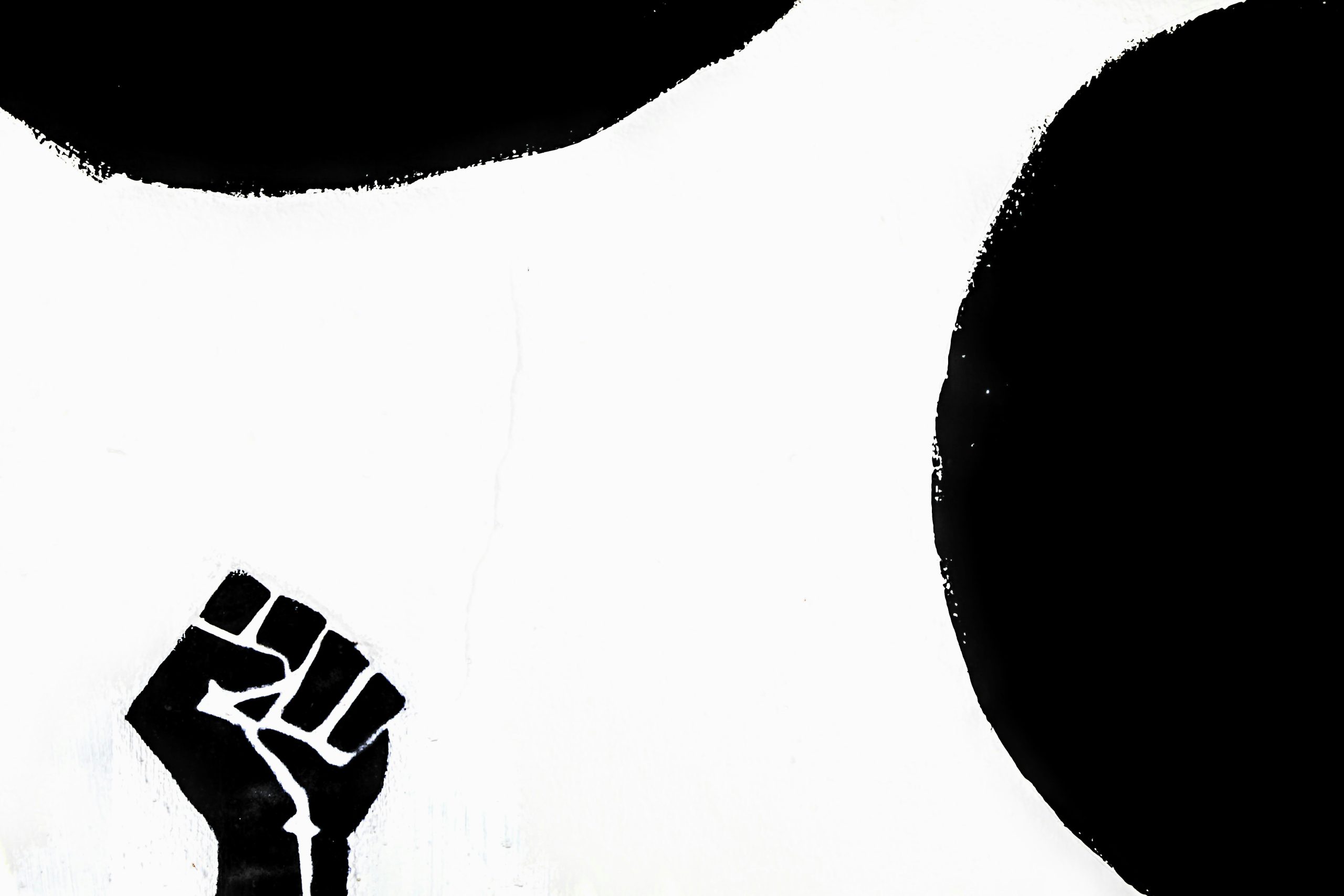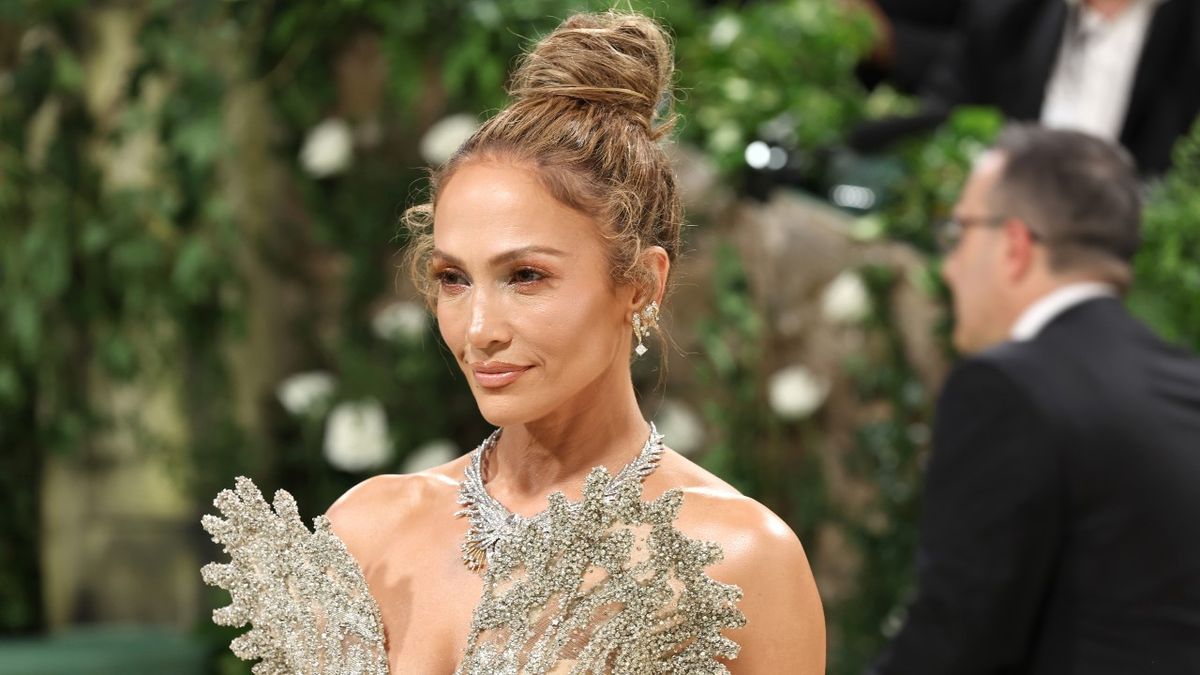Every five weeks or so, I look over at her and whine, “I think I wanna go on T.” Usually, we’re in the car; I’m driving. Sometimes we’re walking out of the grocery store. Occasionally she finds me in the bathroom, stuck in front of the sink, squinting at my chin.
A year ago, this announcement would make her tense up: her shoulders might have jumped half an inch toward her ears and the trace of blue in her neck would spasm like a fish quivering under a thin sheet of ice. Then I had top surgery. After ferrying me across Brooklyn, across Manhattan, to and from New Jersey—before the surgeon even had a chance to remove the thin plastic tubes hanging out of my chest—she’d found that her desire for me, for my body, had coalesced. A dense swirl of light at the center of a newborn solar system. “Not that I didn’t find you attractive before,” she says. “It’s just now…”
I get it, I say.
And yet.
She’s heard this complaint half a dozen times. We rehearse the same lines, the same call-and-response:
HER: What do you want out of T?
ME: My voice is so high-pitched.
HER: You can train it lower.
ME: It would be nice to fill out. To get stronger.
HER: Do you want the facial hair?
ME: I already have facial hair. I already have to shave.
HER: Do you want to pass?
ME: I don’t know.
I admit that no, I’m good.
HER: Do you want the face-shape stuff?
ME: No.
HER: Do you want the skin stuff?
ME: No.
She knows what to expect: a few days of wallowing before I admit that no, I’m good. Early male-pattern baldness runs in my family. There’s a thin spot blossoming on the back of my brother’s head, and he’s only 25. I’m too vain to lose my hair.
We always just call it T. A secret weapon. An old friend’s nickname. The callsign of some vintage, West Side Story gangbanger. A mere ingredient. One more thing to pick up at the store.
Before I had surgery, we talked extensively about our fears. These were primarily logistic. But occasionally the conversation drifted. Dot dot dot hung in the air, palpable as rain. I had convinced a whole succession of psychologists that my discomfort was real and persistent. Even when my last psychologist, a gentle man badly scarred by acne, who by all rights should have been gay but wasn’t, reassured me that it was alright to have doubts; that anxiety about the procedure or the outcome was normal and admitting it wouldn’t disqualify me; even then I was resolute.
I’m not concerned about regret, I said. But to her, I added, What if it’s not enough?
What if I do this and I still feel unfinished? What if I need more and more…
Is it possible to get addicted to masculinity?
By “masculinity,” I mean a mode of expression, a movement that adheres to the surface of the body.
Unfortunately, past a certain point, to affect the surface of the body—its form, its contours—you have to operate from the inside out. You have to take the subcutaneous approach.
Jack Halberstram published Female Masculinity in 1998, when I was four years old. At the time, Jack could still assert, in the course of introducing his book, “I was a masculine girl, and I am a masculine woman.” I read Jack’s work like an instruction manual tossed out the back of a fast-moving boat. I’m bobbing around in the wake, watching Jack speed into the horizon. I know that, at some point, in some shape or form, I’ll almost certainly have to swim out to meet him there.
Because of its reliance on notions of authenticity and the real, the category of butch realness is situated on the sometimes vague boundary between transgender and butch definition. The realness of the butch masculinity can easily tip, in other words, into the desire for a more sustained realness in a recognizeably male body.
— Jack Halberstam, Female Masculinity
In a strange way, it has become harder to be butch.
This, despite the slew of statewide protections that have come into effect over the last twenty years; despite a seismic shift in public opinion; despite a record number of young people identifying as LGBTQ+; despite Obergefell v. Hodges; despite Bostock v. Clayton County; despite new rules requiring many insurers to cover gender-affirming healthcare; despite the proliferation of pronouns in email signatures; despite Target’s gender-neutral children’s clothing line.
In a strange way, it has become harder to be butch.
When I say harder, I don’t mean more dangerous. I don’t mean that life as a butch person has become tougher. With the relative paucity of beatings and arrests, my personal experience of gender nonconformity (compared to, say, Leslie Feinberg’s) has been pretty mundane. Rather, at some point over the last few years, it became more challenging to be recognizeably butch. And butchness, like all modes of gender expression, must be apparent and legible in order to be meaningful when moving around in the world. Butchness, like all forms of female masculinities, is a relative counterproduction of gender. And when it becomes easier to modify or mask the way we look (boobs, beards, height, hips), it means that, for those who can’t or don’t want to medically transition, the butch “lifestyle” is reduced to something like dress-up. A game of pretend.
Then again, maybe I just never had the butch swagger. Maybe I simply couldn’t carry it off.
Jack Halberstam would be the first to retort that masculinity doesn’t have to be naturalized in the body to be made apparent. The biological is not the arbiter of realness (as in drag realness—a measure of authenticity which is anything but, which is assumed, donned, applied). Halberstam, for instance, trawled drag king competitions to study how masculinity could be outdone through parody and imitation. But other examples of “denaturalized identification” were popping up elsewhere. They were busting out of late-night subcultures. They were appearing in kids’ films. Take, says Halberstam, the 1995 movie Babe. The one about the pig.
“There was a time,” a deep voice intones, “not so long ago, when pigs were afforded no respect, except by other pigs. They lived their whole lives in a cruel and sunless world.”
I wish I had a voice like that.
Babe is narrated from a kinder future. A more enlightened future, one in which pigs are no longer confined to spotlit patches of straw in a Benthamite industrial farming warehouse. A version of the future that has never come to pass.
For what it’s worth, I don’t eat pork. This probably makes my viewing experience a little bit easier. It means I can focus on the fact that Babe is obviously, clearly, a butch-trans allegory instead of rethinking my dinner plans.
TITLE CARD: “The Way Things Are”
(Babe)
I am reading this film on the surface. I am not inspired by its unconscious processes. I will not claim that the film is “symptomatic” of the repressive cultural impulses which police non-normative sexualities and genders. I am asserting that the film is what it is, and what it is is gay and trans.
In the darkened barn, Fly, a Border Collie, inspects the newcomer.
FLY: What is your name?
PIGLET: I don’t know.
I am asserting that the film is what it is, and what it is is gay and trans.
FLY: Well, what did your mother call you to tell you apart from your brothers and sisters?
PIGLET: My mother called us all the same.
FLY: And what was that, dear?
PIGLET: She—she called us all ‘Babe.’
I waited until almost the last possible moment to tell my mom I was having surgery. She said, “Oh.” I added that I wouldn’t be coming back to California for the holidays. “Oh,” she said again.
The sage Clydesdale watches the piglet snuffling in the straw.
“I want my mom,” Babe sobs.
“Perhaps we shouldn’t, uh, talk too much about, uh, family,” says the horse.
Here are the broad strokes of the film. Babe, the titular pig, a small orphaned runt, is won by quiet and eccentric Farmer Hoggett at a county fair. He’s soon adopted by Fly, a sheepdog, and her litter of puppies. Babe has no notion that pigs are “for” eating. He has no idea that the helium-voiced Mrs. Hoggett is eagerly fattening him up for Christmas dinner. Babe is too busy getting to know the other animals on the farm—including Ferdinand, a duck who is trying to out-rooster the rooster, and a kindly flock of sheep. The sheep live in terror of the sheepdogs tasked with herding and guarding them. These “wolves,” as the sheep call them, are cruel and haughty and won’t hesitate to bite. Whereas the sheep, Fly explains, are “definitely stupid.” Just like pigs.
Babe is keen to imitate Fly, but he has no natural aptitude for herding à la dog. He’s too gentle, too sweet. The sheep, however, like Babe. He’s courteous and good-natured and they’re happy to do whatever he asks. When watchful Farmer Hoggett begins to suspect that the pig has an uncanny knack with the sheep, and an uncommon bond with the sheepdogs, he enters Babe into the national trials—but not before a jealous housecat informs Babe of a pig’s true “purpose” on the farm:
CAT: The truth is that pigs don’t have a purpose. Just like ducks don’t have a purpose. Oh, alright, for your own sake, I’ll tell you. Why do the bosses keep ducks? To eat them. So why do the bosses keep a pig? The fact is that animals that don’t seem to have a purpose really do have a purpose. Bosses have to eat.
Babe runs away. He’s found the next day, wet and shivering. Hoggett nurses Babe back to health, and he goes on to win the herding competition. Presumably, he has earned himself a permanent place on the farm. Babe “the sheep-pig” will be allowed to live.
And oh, isn’t it just too nice that a film that invokes transness culminates in a sporting event? And that a key delay would hinge on Babe’s contested eligibility? After all, “What’ll we have next year, eh? A laughing hyena doing show-jumping I suppose.”
Babe does not ask to be called a sheepdog. He asks to be allowed to perform sheepdog. At the same time, Babe’s attempt to actually do sheepdog is hilarious to everyone—humans, dogs, and sheep alike:
MAA: Young’un! Stop this nonsense. What’s got into you all a’sudden? I just got finished telling what a nice young pig you be.
BABE: Maa, I was just trying to be a sheepdog.
MAA: Hah! ‘Nuff wolves in the world already without a nice lad like you turnin’ nasty. Ya haven’t got it in ya, youn’un.
Babe does not ask to be called a sheepdog. He asks to be allowed to perform sheepdog.
Babe can do the dogs’ jobs, but not like a dog would. In Halberstam’s words, Babe does “‘dog’ with a difference.” In this sense, “dog” isn’t just a role, but an activity, a posture. Dog is a process, a mode. Sheepdog is an end, a vocation; dog is one—but not the only—means.
“I can do boy, I’ve got the teenage boy thing down,” I say to her. “I just don’t think I can be a man.”
“Yeah, well,” she says doubtfully, “You’re not.”
Babe is supposed to be a funny movie.
A straight, cis audience understands the film to be hilarious because the central conceit is so outlandish. (“If it’s not a duck that thinks it’s a rooster, it’s a pig that thinks it’s a dog!”) A trans audience is not so sure. A trans gaze can’t help but linger on the cross-stitched adage framed in the shack where Farmer Hoggett processes the unfortunate animals slated for slaughter: “What you eat today walks and talks tomorrow.”
A trans viewer knows that any boundary, whether social or biological, isn’t ever as impassable as it might seem.
Early in the film, a “terrible crime” is committed. The crime is trespass. Terrified of being replaced by Mrs. Hoggett’s new alarm clock, Ferdinand the duck cons Babe into infiltrating the farmhouse to steal the “mechanical rooster.” Together, pig and duck enter a forbidden zone, the domestic heart of the farm.
Species distinctions are enforced at the entrance to the farmhouse by humans, dogs, and cats alike. What butch hasn’t been there with Babe, standing confusedly outside the doggie door, the bathroom, or the changing room stall, waiting for permission to join the others inside?
“Respecting the rules,” Rex says, means adhering to the farm hierarchy, the distinctions and divisions between companion animals, working or laboring animals, and livestock. It means accepting, for instance, Babe’s intended fate furnishing the Christmas table, or the “natural” consequences of a duck’s limited use-value. Upsetting these divisions results in the destruction of the Hoggetts’ sitting room—including the dollhouse Farmer Hoggett has been meticulously assembling. Babe and Ferdinand’s “crime” not only brings anarchy indoors, but also trashes the domestic ideal made manifest in Hoggett’s model home.
There’s restorative, liberatory potential in a scene like this. Queers bash back! The trouble is what follows. The other shoe always drops; the social mandate is violently re-established. Rex decrees:
Being a duck, [Ferdinand] must behave like a duck. None of this crowing nonsense. He must accept what he is and be thankful for it. That goes for all of us.
Babe and Farmer Hoggett are brought together at a charity booth at the local fair when Hoggett is asked to guess the pig’s weight. Their partnership begins with an act of observation and estimation. Hoggett is, essentially, asked to “read” the pig. Nervous, the little piglet begins to pee. As the camera pans down to show a splash of urine landing between Hoggett’s leather brogues, the farmer quickly revises his guess. “Sixteen pounds, five…two ounces.” Hoggett is minutely attentive to Babe’s embodiment. At no point, from that moment on, will he forget that Babe is a pig. (“That’ll do, Pig,” is his favorite refrain.) But Hoggett’s attention isn’t just precise. It’s also flexible, responding to an unexpected change in Babe’s body weight. Hoggett wins Babe because he is able to describe Babe exactly as he is at that moment in time.
Hoggett wins Babe because he is able to describe Babe exactly as he is at that moment in time.
The first few days after my surgery, I was still too drugged up and sore to do much on my own. A scopolamine patch caused my pupils to dilate so widely I couldn’t read; I could barely see. My love took everything in hand. She sat me down, every two hours, to empty the red fluid collecting in the drains. The hospital had sent me home with a little plastic measuring cup. She’d hold it up to inspect the units printed on the side, and carefully note the volume. Everything, those first few days, was incremental: standing, eating, bleeding. She was patient and exact. She’d make a fist to expel the air out of the rubber bulb at the end of each drain before replacing the stopper. The bulbs squealed when she did that. I watched her, eyes hopelessly wide.
As the herding trials approach, Hoggett faces an ethical dilemma: choosing a name for the pig. Hoggett, a Kantian through and through, is disinclined to lie under any circumstance. Luckily, the entry form for the National Grand Challenge sheepherding trial only asks for the NAME OF ENTRY.
NARRATOR: He had been worried, for he was a truthful man, that the heading might say “NAME OF DOG,” and then whatever he put would be a lie. But as it happened, luck, for the moment, was running with him.
Hoggett’s name-of-entry for Babe, “PIG,” follows the one-syllable naming convention of working sheepdogs. It publicly commits him to a reinterpretation of Babe’s role on the farm, and to a deconstruction of the significance of the species labels “dog” and “pig.” Like a teacher using a student’s stated pronouns, or a parent adopting their kid’s chosen name, this comes with its own risks. Now, it’s not just Hoggett’s wife who finds him odd or deluded—everyone can see that Hoggett is actively subverting “The Way Things Are.”
48 young pigs played the role of “Babe.”
For visual consistency, each pig had to be 18 inches tall. Because pigs grow so quickly, this meant filming could only take place when the pigs were 16 to 18 weeks old. Six Large White Yorkshire pigs were bred every three weeks to meet the production team’s needs.
Babe, the pig, is a composite—they are properly plural.
Although all the pigs that appear on-screen are female, the film never specifies Babe’s gender.
Sometimes it is not a question of what the visible hides but how it is that we have failed to see certain things on its surface.
—Anne Cheng, “Skins, Tattoos, and Susceptibility”
Forget the popular narrative that the trans experience is one of confinement and interiority, of “being trapped in the wrong body” like a freak matryoshka. Transness is superficial in the sense that it plays out in a hall of mirrors. Transition is the process of modifying one’s reflection. And yet, transness and trans narratives present a paradox when it comes to surface reading, the critical practice of apprehending “what is there” instead of excavating, unearthing, or querying what is not.
I said I would read Babe on the surface. I said I would affirm the obvious, the evident. On the one hand, surface reading asks us to accept gender as we see it expressed—and to acknowledge transness where we encounter incongruity. But it’s easily corruptible. After all, when a transphobic reader clocks a person visibly assigned female at birth wearing “men’s” clothes and adopting a “male” affect, what they see is an unsuccessful act of subterfuge. Surface reading erases anyone who passes and fails everyone who relishes the in-between.
Transition is the process of modifying one’s reflection.
Babe’s “species dysphoria” is plain. The butch-trans dynamic of the film is overt, unhidden; it leaps out to a trans viewer, to a fellow sheep-pig. I walk around Farmer Hoggett’s yard. I stop and peer inside the farmhouse door. But, if surface reading asks us to accept the literal meaning of a text, then it also means missing genders and sexualities that have been historically defined by subtlety and discretion, symbols and codes.
Does no one know how to read me anymore? Is everyone so unsatisfied with the way things seem that I have to double, triple down on masculinity in order to be legible?
I’ve spent years cultivating, performing ambiguity. Is that what I stand to lose if I go on T?
Does Babe ever get tired of doing sheepdog, and, to simplify things, decide they just want to be a dog?
We are rewatching Hitchcock’s Suspicion. We are an hour and twenty five minutes into the film. Dinner is in progress. Johnnie (Cary Grant) and Lina (Joan Fontaine) are visiting Isobel, a local crime novelist, in her country home. They have been joined by Isobel’s brother, a tweedy pathologist—and a woman in a black tailored suit.
You can tell it’s tailored when the camera lingers on her as Isobel describes how a piano could be rigged as a murder weapon. The shoulders slope neatly; there’s no gape behind the collar, which is pinned into place behind a sharp black tie. She has parted her hair down the center and twisted it back into a low, unobtrusive bun. The waves slicked around her forehead gleam with Brilliantine.
She barely says anything at all, although she does call Johnnie, “My dear chap.” Isobel, casually, affectionately, calls her, “Phil.”
We have a few pet names for one another. Because I gave her some homemade bread on our first date, I was entered into her contacts as “Brioche Boy.” When she texts me, her name still shows up as “Aileen from Lex.”
But mostly, we just call each other “Babe.”
In 1998, the same year Jack Halberstam published Female Masculinity, an international bunch of film aficionados got together on Google Groups to discuss the possibility of a lesbian couple in Suspicion.
Kari S., from Turku, Finland, writes:
I think I’ve found something in Suspicion that I hadn’t noticed before.
Am I saying something about a film, or something about myself?
The dinner scene at Isobel’s (the mystery writer) house raised some questions.
There are five people in that scene: Grant, Fontaine, Isobel, a man who is identified as her chemist brother (who Grant tries to pump information concerning no-trace-leaving-poisons from)
AND a woman wearing a men’s suit, complete with a tie. She is not identified at all.
She takes part in the conversation and fills the wine glasses [sic] so one kind of gets the impression that she’s the man in the house…
I wonder if anyone else has noticed this.
Poor Kari S. is quickly shot down. A Dutch man named Michel writes back:
Lots of heterosexual women wear suits. Lots of homosexual women do notwear suits.
Lots of heterosexual women take part in conversations and pour wine. Lots of homosexual women do not take part in conversations and do not pour wine.
Lots of heterosexual women act as if they are the ‘man’ in the house.
Lots of homosexual women do not act as if they are the ‘man’ in the house.
Are you telling us something about that film or about yourself?
Am I saying something about a film, or something about myself?
In the 1940s, queer women, especially prototypical butches, wore signet rings on their pinky fingers to signal to their interest in other women. Patricia Highsmith wore one. The ring invites an alternative reading of the wearer by those in-the-know. It is subtle, but it is there, worn outside the body, the signifier of a discrete but not-so-secret code. The ring is a confirmation of what otherwise might only be intimated or suggested. You were right the whole time, says the ring.
I take a screenshot of the dinner scene, and blow it across my laptop like this is an episode of NCIS.
Phil tips the wine out of the carafe. Everything is black and white. The wine is a ribbon as dark as Phil’s suit. There.
A ring winks brightly on the pinky finger of her right hand.
Some things, whispers the body, are exactly as they seem.
Note: The author of this essay has since gone on T. It feels amazing.








